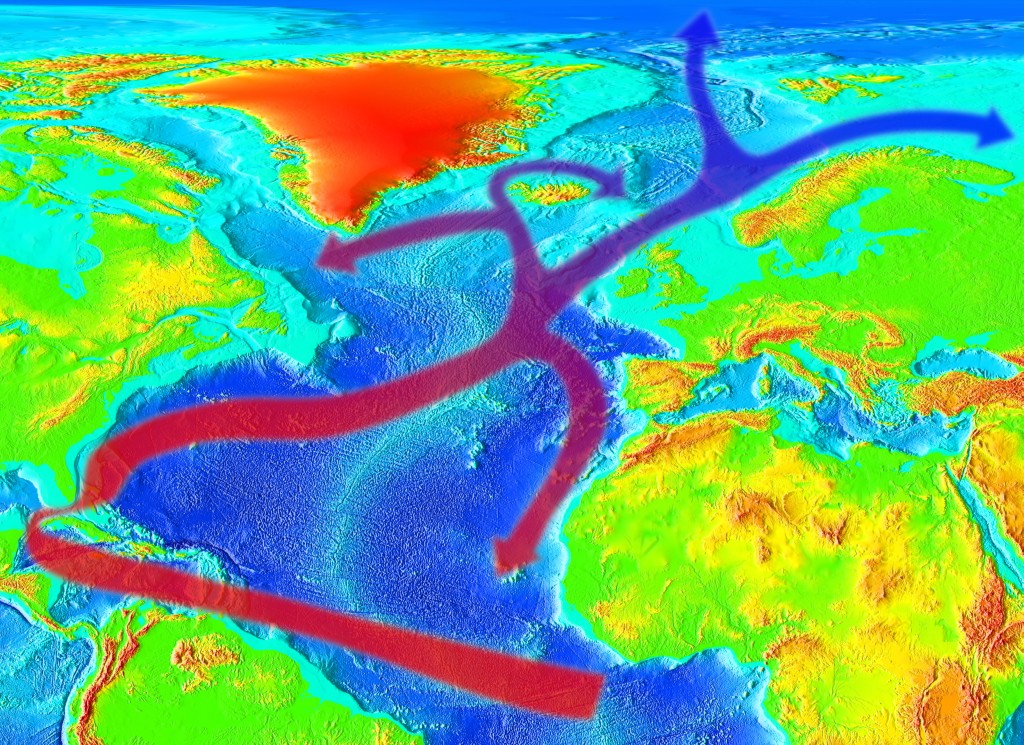Scientists Warn of Potential Gulf Stream Collapse

Summary:
- Scientists predict the Atlantic Meridional Overturning Current (AMOC), an essential part of the global climate system, could collapse by mid-century due to human-induced climate change.
- Studies suggest that the collapse of this critical system, which includes the Gulf Stream, could have catastrophic global weather implications and affect every person on the planet.
- This alarming prognosis stems from recent research that suggests the tipping point for the AMOC’s collapse may be closer than previously thought, possibly as soon as 2025.
The Global Conveyor Belt and Its Potential Collapse
The Atlantic Meridional Overturning Current (AMOC) is more than just an oceanic current; it functions as a global conveyor belt, transporting warm water from the tropics towards the North Atlantic. Upon reaching the North Atlantic, the water cools, increases in salinity, and sinks deep into the ocean before spreading southwards. This natural process plays a pivotal role in regulating global weather patterns.
However, new research published in the journal Nature warns that this essential system could collapse as soon as 2025 or around the middle of the century if current levels of greenhouse gas emissions persist. This would trigger a chain of catastrophic effects, from extreme winters and sea level rises in Europe and the U.S. to a shifting of monsoon patterns in the tropics.
Peter de Menocal, president of the Woods Hole Oceanographic Institution, states, “A shutdown would affect every person on the planet – it’s that big and important.”
The Past as the Key to the Future
Our understanding of the AMOC’s potential collapse does not solely rely on future predictions, but also stems from past climatic events. Over 12,000 years ago, rapid glacial melting caused the AMOC to shut down, resulting in significant temperature fluctuations in the Northern Hemisphere. If such an event were to occur again, the consequences could be disastrous.
Scientists leading the study, including climate physics professor Peter Ditlevsen, analyzed sea surface temperatures in the North Atlantic over the past 150 years to detect early warning signals of critical changes in the AMOC. By doing so, they provided an estimate with “high confidence” that the AMOC could shut down or collapse between 2025 and 2095. According to Ditlevsen, the likeliest point of collapse is somewhere between 2039 and 2070.
Urgency for Action
Despite the serious implications of the AMOC’s potential collapse, not all scientists involved in climate studies agree on the exact tipping point. As Stefan Rahmstorf, professor of physics of the oceans at the University of Potsdam, notes, “There is still large uncertainty where the tipping point of the AMOC is, but the new study adds to the evidence that it is much closer than we thought just a few years ago.”
The general consensus, however, is that the threat is real and urgent. The scientific community calls for quick and decisive measures to cut greenhouse gas emissions, thereby reducing global temperatures and slowing melting in the Arctic.
Reflecting on the urgency of the situation, de Menocal emphasizes, “The key point of this study is that we don’t have much time at all to do this. And the stakes just got higher.”
Publications:
- CNN: Read more here
- The Guardian: Read more here

